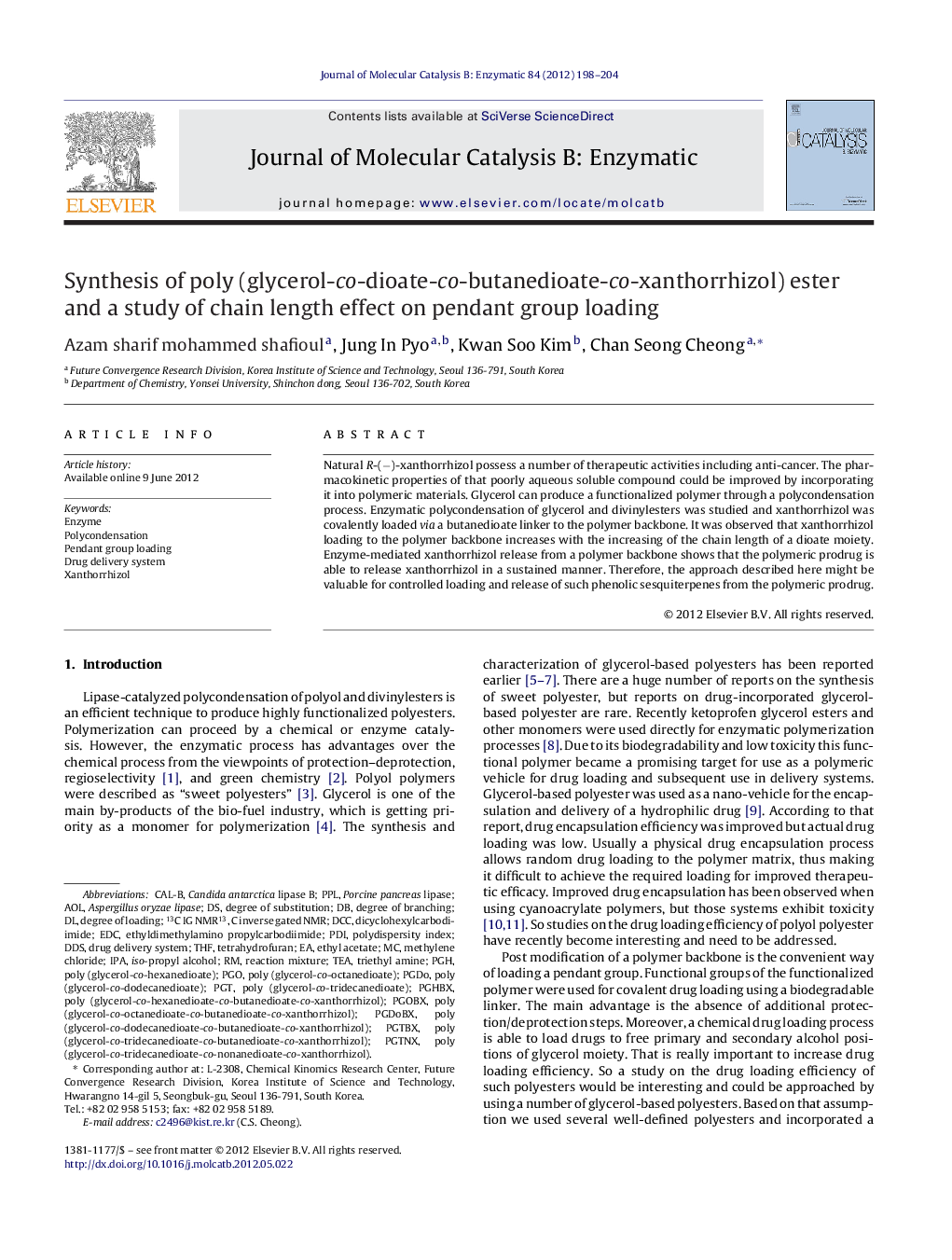| کد مقاله | کد نشریه | سال انتشار | مقاله انگلیسی | نسخه تمام متن |
|---|---|---|---|---|
| 69910 | 48799 | 2012 | 7 صفحه PDF | دانلود رایگان |

Natural R-(−)-xanthorrhizol possess a number of therapeutic activities including anti-cancer. The pharmacokinetic properties of that poorly aqueous soluble compound could be improved by incorporating it into polymeric materials. Glycerol can produce a functionalized polymer through a polycondensation process. Enzymatic polycondensation of glycerol and divinylesters was studied and xanthorrhizol was covalently loaded via a butanedioate linker to the polymer backbone. It was observed that xanthorrhizol loading to the polymer backbone increases with the increasing of the chain length of a dioate moiety. Enzyme-mediated xanthorrhizol release from a polymer backbone shows that the polymeric prodrug is able to release xanthorrhizol in a sustained manner. Therefore, the approach described here might be valuable for controlled loading and release of such phenolic sesquiterpenes from the polymeric prodrug.
Figure optionsDownload as PowerPoint slideHighlights
► A number of poly (glycerol-co-dioate-co-butanedioate-xanthorrhizol) esters were synthesized and studied to address the pendant group loading ability.
► Novel pendant group loading method might be applicable for other biologically active natural phenolic compounds.
► Enzyme mediated release of xanthorrhizol from polymer backbone shows potential to use in DDS.
► Our results suggest that xanthorrhizol loading increases with increasing the chain length of dioate moiety.
Journal: Journal of Molecular Catalysis B: Enzymatic - Volume 84, December 2012, Pages 198–204